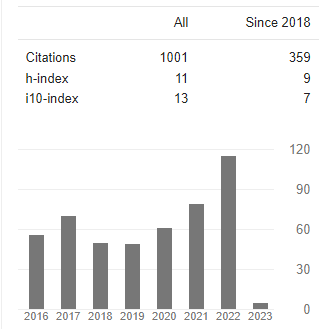INFLUENCE OF ENVIRONMENTAL HAZARDS TO COACHING EXERCISE IN SPORTS
Abstract
The Olympic Games have drawn attention to a number of environmental influences on sports performance. During the time of the Summer Olympics it is usually hot and/or humid. On the other hand, the Winter Olympics invariably call for protection against the cold. The 1968 Mexico City Games, sited at 2,350 meters above sea-level, presented the situation of lowered barometric pressure and reduced air density. World records were set in the men's 100, 200, and 400 meter races and the long jump. Distance races were appreciably slower than in previous Games. In Los Angeles in 1984, concern was expressed for athletes possibly experiencing high levels of both heat and air pollution. While some athletes certainly suffered as a result of the climate, British middle-distance runner, Steve Ovett, and Swiss woman marathoner, Gabriela Anderson-Schiess being the most obvious examples, the weather in Los Angeles during the Games was generally comfortable. It is the purpose of this section to describe the physiological responses to a number of environmental conditions and to offer considerations that could be given during the performance of sporting activities.
Downloads
References
Internet Society for Sport Science: http://sportsci.org. 10 March 1998. Med. Science & Sport Exercise 23:S25, 1991
Burton, A. C., & Edholm, O. G. (1969). Man in a Cold Environment. New York, NY: Hafner.
Costill, D. L. (1979). A Scientific Approach to Distance Running. Los Altos, CA: Track and Field News.
Costill, D. L., Kammer, W. F., & Fisher, A. (1970). Fluid ingestion during distance running. Archives of Environmental Health, 21, 520-525.
Dawson, B., & Pyke, F. S. (1988). I: Responses to wearing sweat clothing during exercise in cool conditions. II: Training in sweat clothing in cool conditions to improve heat tolerance. Journal of Human Movement Studies, 15, 171-183.
Kaufman, W. C. (1982). Cold weather comfort or heat conservation. The Physician and Sportsmedicine, 10, 70-75.
Keatinge, W. R., & Sloan, R. E. (1972). Effect of swimming in cold water on body temperatures in children. Journal of Physiology, 226, 55-56.
Nadel, E. R., Holmer, I., Bergh, U., Astrand, P-O., & Stolzijk, J. A. (1974). Energy exchanges of swimming man. Journal of Applied Physiology, 36, 465-471.















